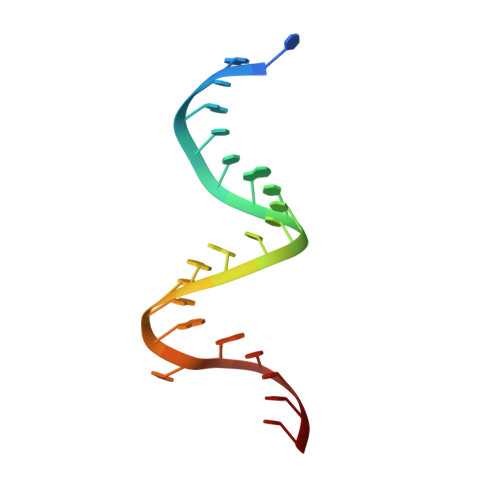Identification of the molecular attributes required for aminoglycoside activity against Leishmania.
Shalev, M., Kondo, J., Kopelyanskiy, D., Jaffe, C.L., Adir, N., Baasov, T.(2013) Proc Natl Acad Sci U S A 110: 13333-13338
- PubMed: 23898171
- DOI: https://doi.org/10.1073/pnas.1307365110
- Primary Citation of Related Structures:
4K31, 4K32 - PubMed Abstract:
Leishmaniasis, a parasitic disease caused by protozoa of the genus Leishmania, affects millions of people worldwide. Aminoglycosides are mostly known as highly potent, broad-spectrum antibiotics that exert their antibacterial activity by selectively targeting the decoding A site of the bacterial ribosome, leading to aberrant protein synthesis. Recently, some aminoglycosides have been clinically approved and are currently used worldwide for the treatment of leishmaniasis; however the molecular details by which aminoglycosides induce their deleterious effect on Leishmaina is still rather obscure. Based on high conservation of the decoding site among all kingdoms, it is assumed that the putative binding site of these agents in Leishmania is the ribosomal A site. However, although recent X-ray crystal structures of the bacterial ribosome in complex with aminoglycosides shed light on the mechanism of aminoglycosides action as antibiotics, no such data are presently available regarding their binding site in Leishmania. We present crystal structures of two different aminoglycoside molecules bound to a model of the Leishmania ribosomal A site: Geneticin (G418), a potent aminoglycoside for the treatment of leishmaniasis at a 2.65-? resolution, and Apramycin, shown to be a strong binder to the leishmanial ribosome lacking an antileishmanial activity at 1.4-? resolution. The structural data, coupled with in vitro inhibition measurements on two strains of Leishmania, provide insight as to the source of the difference in inhibitory activity of different Aminoglycosides. The combined structural and physiological data sets the ground for rational design of new, and more specific, aminoglycoside derivatives as potential therapeutic agents against leishmaniasis.
Organizational Affiliation:
Schulich Faculty of Chemistry, Technion-Israel Institute of Technology, Haifa 32000, Israel.















